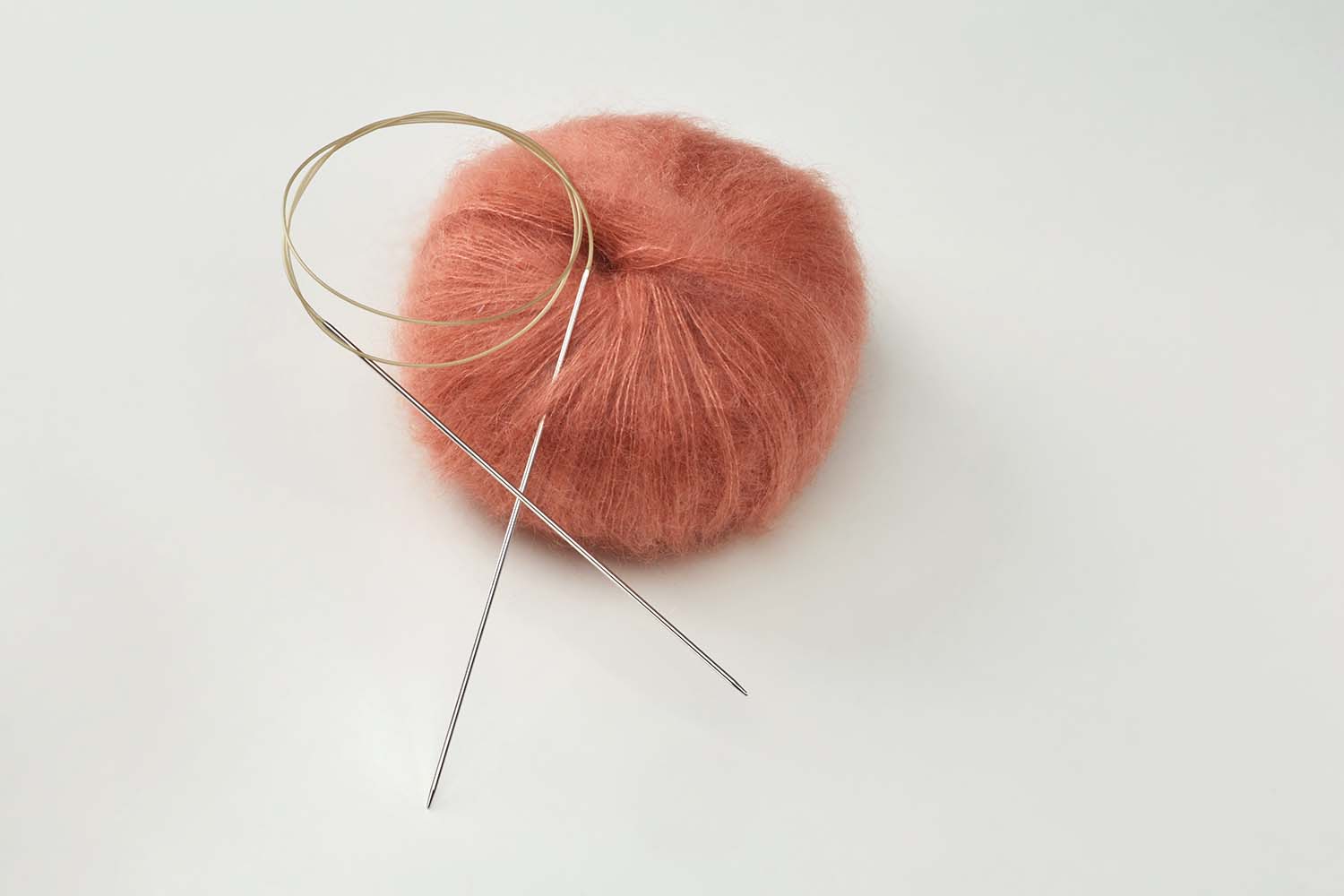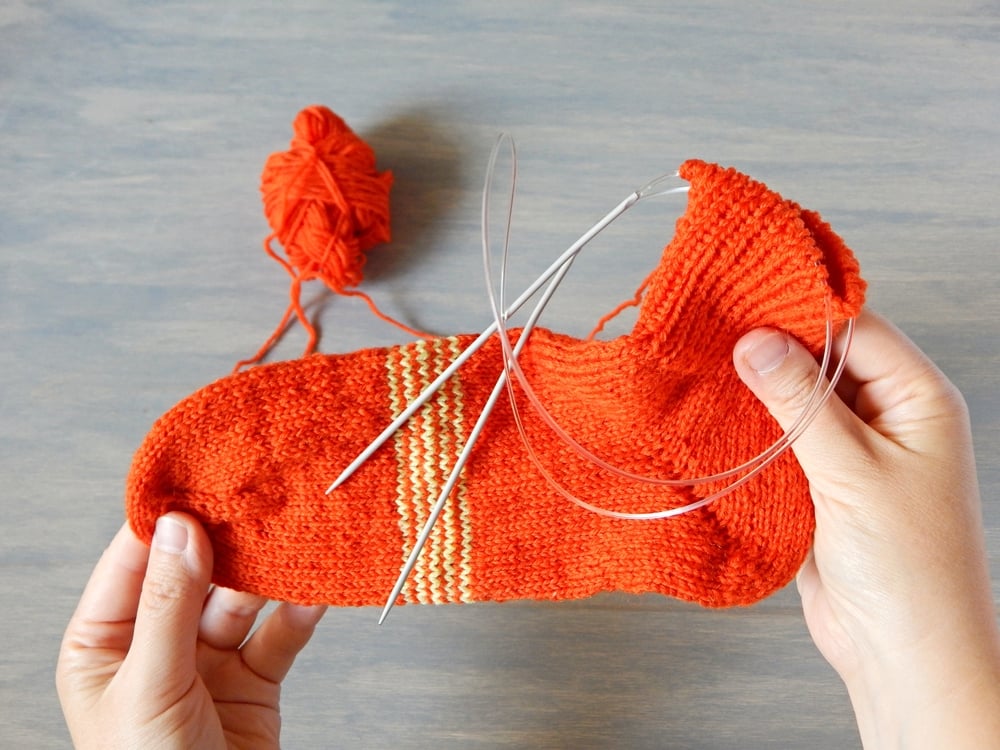If you're looking to expand your knitting skills, it’s definitely worth mastering the Magic Loop technique to take your circular knitting projects to the next level.
So whether you're tired of fumbling with double-pointed needles (DPNs) or if you want a cleaner, more efficient way to knit in the round, the Magic Loop technique offers an elegant solution, especially for small-circumference projects such as socks, sleeves, or mittens.
What Is The Magic Loop Technique?
It is a way of knitting in the round using one, long circular needle.
Instead of relying on a set of DPNs, you can manipulate the long cable to divide your stitches into two sections.
This technique is ideal for knitting items with a small circumference; for example, the crown of a hat, small cuffs, or tiny baby booties.
Why Use The Magic Loop?
- Eliminates the Need for DPNs: With Magic Loop, you can knit even the smallest items without reaching for DPNs.
- Fewer Needle Changes: You won’t have to worry about changing between four or five needles, as you do with DPNs.
- Improved Portability: The circular needle makes knitting on the go easier and less prone to needle loss, damage, or tangle.
Getting Started With Magic Loop
Here’s a simple step-by-step guide on how to get started with the Magic Loop technique:
- Choose the right needles

To use the Magic Loop technique, you need a circular needle with a long, flexible cable(usually at least 80cm/32 inches). Ensure the cable is pliable enough to loop around your stitches easily.
- Cast on your stitches
Cast on the required number of stitches as you normally would for your project. Be sure to use a loose cast-on method to avoid tightness at the edges.
- Divide the stitches
Once you have cast on your stitches (usually an even number), slide them from the solid tip onto the cable. Find the space between the middle two stitches so as to divide in half the total number of stitches. For example, if you have cast on 64 stitches, locate the gap between stitches 32 and 33.
- Form the magic loop
Pull the cable out in the space between the two halves of the stitches — so that an equal number of stitches are sitting on the two needle tips — to form a loop. Ensure your stitches are not twisted!
- Start knitting
- Hold the two tips alongside each other and ensure your working yarn comes from the back needle. Do not allow the working yarn to hang down between the two tips, but bring it up and over the back needle.
- Pull the back needle tip so that the stitches slide onto the cable. You will use this tip to knit into the stitches on the front needle.
- Knit the stitches on the front needle.
- Once you have worked all the stitches on this needle, drop your left needle tip, turn the work in your right hand 180° and hold in your left hand.
- Hold this tip at the back and pull the cable through the stitches you have just worked so that they are on the ‘empty’ needle tip. You may have to twist and wriggle the stitches a bit to get them onto the tip; this will get easier as you complete more rounds. Knit the second half (the stitches on the front needle tip) by following the same procedure from point ‘b’. You have knitted the first round.
- Repeat the process from ‘b’ to ‘e’, always pulling out the cable to continue forming the loop.
Common Troubleshooting Tips
- Tight cable: If you find that your cable is too stiff, try soaking it in warm water to make it more pliable.
- Laddering: To avoid loose stitches (or ‘ladders’) at the joins between needle sections, pull the yarn snug as you transition between the front and back halves of your project.
Projects Perfect For Magic Loop
Here are a few project ideas where the Magic Loop technique shines:

- Socks: Magic Loop is fantastic for sock knitting, as it lets you work with small circumferences without the need for DPNs.
- Hats: Whether you’re knitting a baby hat or the crown of an adult-sized hat, Magic Loop provides better tension control.
- Sleeves: If you're working on a sweater, this method is perfect for knitting the sleeves in the round.
Final Thoughts
Magic Loop knitting is a versatile and efficient technique that opens up new possibilities for knitting in the round.
Once you've mastered it, you'll find that it's an excellent replacement for DPNs, and a fun and portable way to knit smaller projects.
Magic Loop is a fantastic tool for small circumference knitting. Try it!
Happy knitting!
View the tutorial on YouTube



